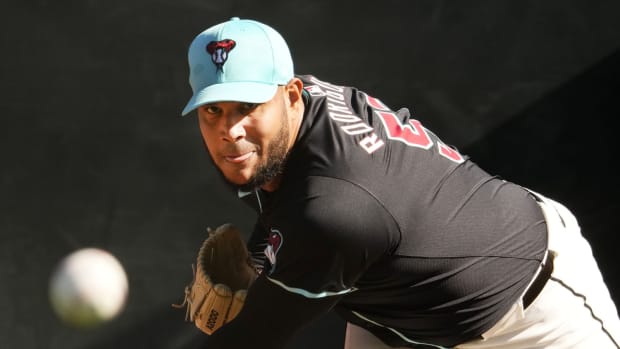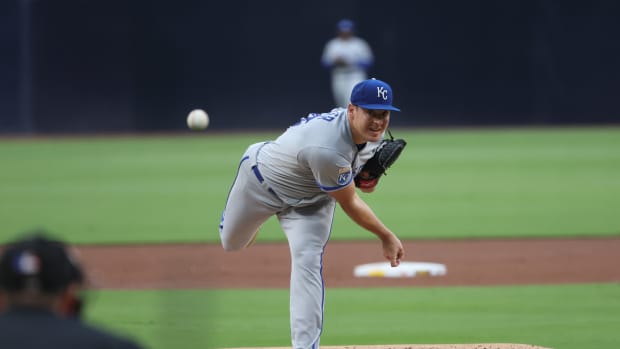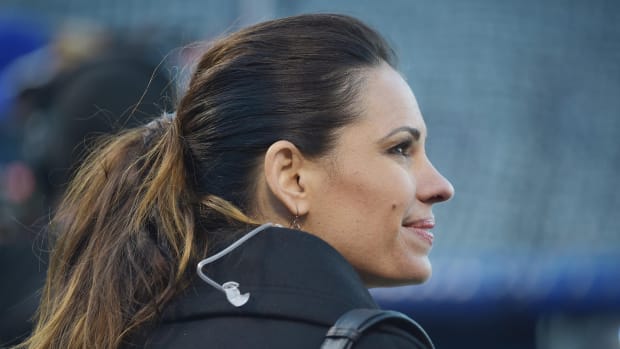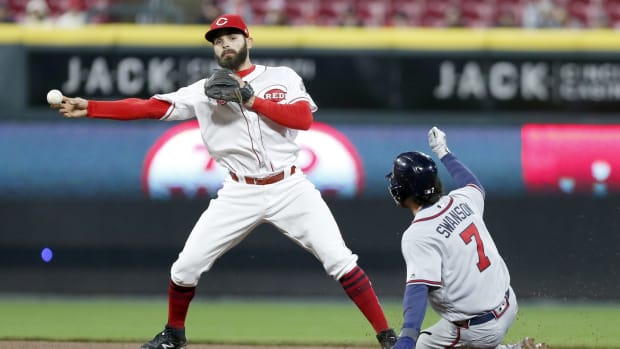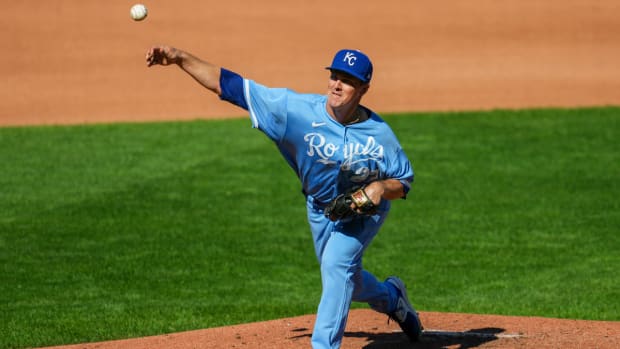Mike Matheny: Kris Bubic Improving ‘Already Good Repertoire'
Some nights, pitchers just have "it." This can also be referred to as "having your best stuff" or having an "on" night. For Kansas City Royals lefty Kris Bubic, he was certainly on during Saturday's 8-1 win over the Mariners.
In 6.1 innings of ball, Bubic allowed just two hits and an earned run. It's not like he dominated on the mound, as he walked four hitters and struck out just two. Piling up strikeouts has never been his game, so this shouldn't come as a surprise. He also issues walks at a high rate. Nothing from Bubic's efficient, yet under-the-radar start should come as a surprise, and manager Mike Matheny agreed when asked what stood out to him.
"It won't surprise you, but fastball command early and then how he added everything," Matheny said. "He was living on the corners with just about everything. A little bit of trouble right out of the gate, then found it in a hurry and just got better as he went. The breaking ball really showed up later in the outing, the changeup was very good but he was hitting all quadrants. He was living on the edges and didn't give a lot of free passes. When he did, he figured out ways to get himself out of it and the defense made nice plays behind him . . . he was in control of the strike zone today and mostly with the fastball. Everything else played off it."
Bubic's fastball and changeup are undoubtedly his bread-and-butter pitches. They get him by more often than not, and rightfully so. He gets more downward break on those pitches, per Baseball Savant, than the MLB average. He pitches to contact and when hitters can't adjust, it works.
The curveball is Bubic's tertiary pitch, and he throws it a little over half as often as his changeup (he throws his fastball around half the time in general). The pitch is slightly slower than the league average but it gets quite a bit of downward vertical movement relative to most pitchers' curves. This adds some legitimate break to the offering, making it a difficult pitch to hit when it's at its best. Matheny touched on how important it is for Bubic to continue to develop that third pitch.
"Yeah, it's huge," Matheny said. "I mean, being able to get a first-pitch strike with it and then being able to play off it. He was doubling it up at certain guys and wasn't afraid to throw it back-to-back. That's the biggest growth I've seen him (have) this season, just the faith he has in that pitch now. He's paying attention to what the hitters are telling him, and they're not doing a lot with it. It's a strike pitch, yes, but it can also be a putaway pitch. He already had a couple of putaway pitches, so it just makes him more dangerous and it's really hard to guess what direction he might go. It's a great addition to an already good repertoire."
Bubic likely won't ever be a high-strikeout pitcher. Unless his "stuff" becomes superb, he'll live in the margins and rely on merely solid command to get him by. He may not possess the ceiling of some of the Royals' other young starters, but his feel for two decent pitches gives him a decent floor. If he can continue to hone in on the curveball and progress with that, he'd have three serious options on the mound — regardless of the situation. Saturday's start was a step in the right direction for him in that regard, and Matheny knows it.
